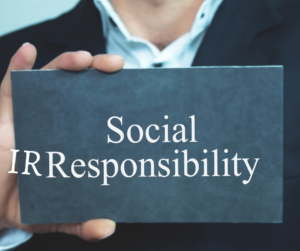 You’re Invited!
You’re Invited!
What: A Dinner Party/Fundraiser
Why: To Support Anytown’s Homeless Population
Where: The Estate of Our Founder, Bill Brookstone, in South Highlands
Please join us for an evening of wine, dinner, and song.
Our homeless population is important to us, so we at Brookstone Realty want to do our part to support shelters and programs for the homeless in our city.
Catered by celebrity chef Rich Richardson, dinner will be a fantastic Asian fusion exploration of fresh sushi and seafood.
Wines will be paired by our very own sommelier, Susan Sheppard.
Dinner will be followed by a special private performance
by world-renowned violinist Jen Chen.
Tickets: $250 each Tables for 6: $1,350 (save $250!)
All additional donations will be matched 100% by Brookstone Realty!
As leaders, it’s important that we stay connected to our communities, contribute to our communities, and make it appear as if we care about the communities in which we live. Holding fundraisers and events is a fantastic way to demonstrate your commitment and leadership without taking too much of a hit to the bottom line. The above is a perfect example of how to put together a fabulous party that you and your guests will enjoy immensely while giving you the opportunity to host a party in your home with top-of-the-line service providers and entertainers. Also, it’s 100 percent paid for and can be written off! Win-win!
You can invite community leaders and industry leaders, and while they won’t be able to afford to come, you can even extend the invitation to your employees. They’ll see not only that you’re generous, but that you have great taste in food and music. By selling tickets, you’re simply covering your costs. You can ask for donations, but because most guests will think that the cost of their ticket is donated, they won’t make extra donations, and your claim of matching donations 100 percent will sound so, so much better than it really is. You may actually get to pull this scheme off and turn a little profit!
LET’S GET REAL
Oh yeah, there’s nothing like holding a fundraiser for the homeless in the estate of a real estate tycoon.
Seriously, this seems absurd, but when it comes to “social responsibility” leaders really can be this tone-deaf. Social responsibility is a term popularized over the last several years that has become a mainstay of good corporate stewardship. It is supposed to be defined by what your company believes is its responsibility to society and what it does to support that belief. Keyword here: believes.
It is one thing to simply throw some money at some charities, then spin up some marketing-speak to make it sound like your company is run by do-gooders. It’s another thing to actually believe in something, communicate that belief genuinely to both your staff and the community, then execute strategies and tactics to stay true to those beliefs. Example:
Belief: At Brookstone Realty, we believe that everyone needs to feel at home.
Strategy: We’ll donate 5 percent of our annual profits to programs that help build shelters and homes for those in need.
Tactics: Twice a year, for one day, we close our offices as our staff joins Habitat for Humanity to participate in building homes.
See how easy it is? Much easier than throwing a fancy party that nobody on your staff can participate in. Habitat for Humanity wins, your company wins by being true to a belief, and your staff wins by feeling like they achieved a common goal. THAT, dear leaders, is a win-win-win.
Each year, as part of your strategic planning process, design a social responsibility platform for the year. First, decide on a maximum percentage of net income that you or your owners are comfortable with earmarking for charitable donations. Once that amount is agreed on, do not change it until the following year. Then create a pie chart showing the allocation of percentages. You can have each department take on a piece of the pie, or you could decide that some of it will be straight cash donations and some of it will be employee time off to volunteer with special charities. However, you construct your platform, make sure it is inclusive and genuine. At the end of the year, you and the staff can include it in your list of accomplishments, or “goals met,” for the year.
Nothing bonds a group of people together like meeting shared goals. And a goal of giving that is shared and believed in by all can be part of a very powerful brand story.
- Do I have a social responsibility platform that has been clearly communicated to the company?
- Does the platform have some conceptual relationship to the mission of the company?
- Are there enough opportunities within that platform to give my staff options to get involved?
- Can the staff get involved without spending any money, and is their time just as valuable to the cause?
- Does anything about the platform feel mandatory or expected?
